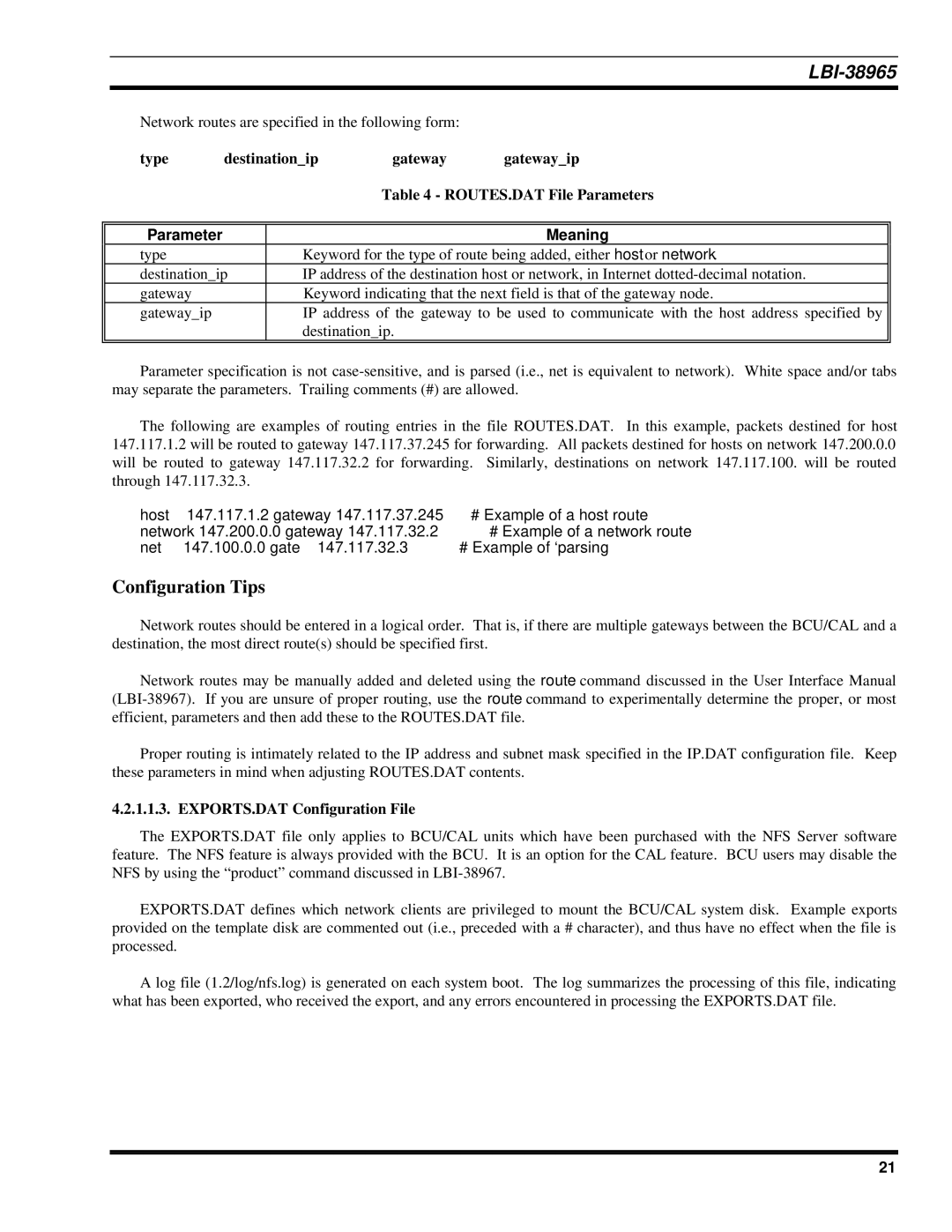
LBI-38965
Network routes are specified in the following form:
type | destination_ip | gateway | gateway_ip |
Table 4 - ROUTES.DAT File Parameters
Parameter
type
destination_ip
gateway
gateway_ip
Meaning
Keyword for the type of route being added, either host or network.
IP address of the destination host or network, in Internet
IP address of the gateway to be used to communicate with the host address specified by destination_ip.
Parameter specification is not
The following are examples of routing entries in the file ROUTES.DAT. In this example, packets destined for host 147.117.1.2 will be routed to gateway 147.117.37.245 for forwarding. All packets destined for hosts on network 147.200.0.0 will be routed to gateway 147.117.32.2 for forwarding. Similarly, destinations on network 147.117.100. will be routed through 147.117.32.3.
host | 147.117.1.2 gateway | 147.117.37.245 | # Example of a | host route | ||||
network | 147.200.0.0 | gateway | 147.117.32.2 | # | Example | of | a | network route |
net | 147.100.0.0 | gate | 147.117.32.3 | # | Example | of | `parsing | |
Configuration Tips
Network routes should be entered in a logical order. That is, if there are multiple gateways between the BCU/CAL and a destination, the most direct route(s) should be specified first.
Network routes may be manually added and deleted using the route command discussed in the User Interface Manual
Proper routing is intimately related to the IP address and subnet mask specified in the IP.DAT configuration file. Keep these parameters in mind when adjusting ROUTES.DAT contents.
4.2.1.1.3. EXPORTS.DAT Configuration File
The EXPORTS.DAT file only applies to BCU/CAL units which have been purchased with the NFS Server software feature. The NFS feature is always provided with the BCU. It is an option for the CAL feature. BCU users may disable the NFS by using the “product” command discussed in
EXPORTS.DAT defines which network clients are privileged to mount the BCU/CAL system disk. Example exports provided on the template disk are commented out (i.e., preceded with a # character), and thus have no effect when the file is processed.
A log file (1.2/log/nfs.log) is generated on each system boot. The log summarizes the processing of this file, indicating what has been exported, who received the export, and any errors encountered in processing the EXPORTS.DAT file.
21
